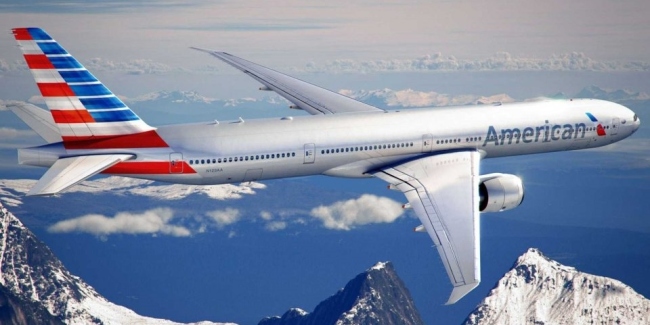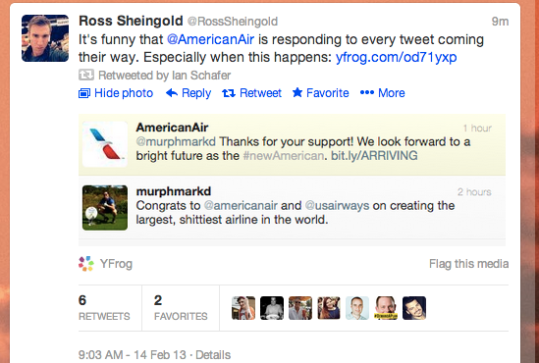
American Airlines, the largest airline in the world, offers both international and domestic flights to its customers and recently merged with US Airways Group. With its impressive corporate size and eighty-four year history, one would think that the company would be able to dodge embarrassing and avoidable social media scandals. Think again!
Ross Sheingold (@RossSheingold), the Chief Strategy Officer at Laundry Service (a New York City and Los Angeles social media agency), found it odd the way American Airlines was responding to customer questions on Twitter.
Sheingold first tweeted at the company and the company responded:

With that promise, their 2013 social media scandal was amplified.
In February 2013, Sheingold noticed that American Airlines (@AmericanAir) thanked Mark Murphy (@murphmarkd) for his support after he had called them “the largest, sh*ttiest airline in the world”.

American Airlines was using an automatic response program to respond to users tweeting towards them instead of directly responding to comments and concerns. This is a clear example of the failure and danger of automatic responses. The internet responded by tweeting insults towards the company and mocking the airline on Twitter. Additionally, multiple news outlets covered the story. A social media nightmare.
In response, American Airlines deleted those tweets and changed their robo-response to the following:

I think the company could have handled the situation better. By using an automatic response program in the first place made the company appear disingenuous and as if they didn’t care enough to have a human respond directly to tweets. American Airlines’ response, deleting tweets and changing their automatic response message, showed that they acknowledged their fault yet were unwilling to release a public response. I think it showed their lack of dedication to customer service from their unwillingness to stop using automated responses or even address the issue. Considering the size of the company, one would think they’d be able to hire someone to handle their social media.
Lessons from the scandal: Don’t use robo-tweets. As we’ve learned in class, social media is a conversation. I’m sure users would appreciate and expect responses from an actual human. For authenticity and PR purposes, social media accounts should always be monitored by real human beings.
I’m sure this social media scandal made the company want to fly far, far away.
Yes, this is a great example of the “set it and forget it” mistake that we’ve seen with a few brands!